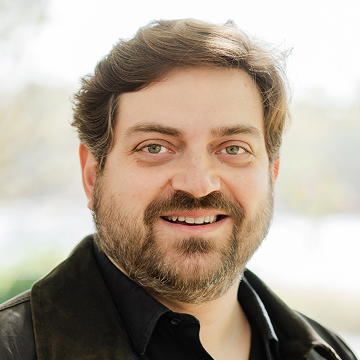The country’s highest-achieving scientists have been leaving the Environmental Protection Agency in droves for the private sector.
It’s exactly what the Trump administration said it was going to do: shrink the agency’s scientific research apparatus. It’s also an outcome that could come back to bite the EPA in times of crisis, departing researchers say.
NOTUS identified 16 researchers, all with doctoral or master’s degrees, many of them experts in using machine learning to speed up the identification and analysis of toxic chemicals, who have left the EPA for the private lab UL Research Institutes.
Most of these scientists worked for the EPA’s much-vaunted Center for Computational Toxicology and Exposure, tasked with developing ways to quickly figure out chemical toxicity.
This was a team that advised crews dispatched to East Palestine, Ohio, where a train carrying hazardous materials derailed in 2023, causing massive environmental damage. One of the departing researchers said that the center had an “on call” scientist for the field teams in East Palestine.
The EPA has said that the agency should only be conducting research that is required by law for it to fulfill its duties. The agency has eliminated its Office of Research and Development, or ORD, and reassigned scientists to other offices focused on regulatory responsibilities.
“The unfortunate reality is that the work many people in ORD were doing was disconnected from our statutory obligations,” the agency said in response to NOTUS’ questions about the loss of the EPA researchers.
Departing scientists say that misses the impact of their work. The team of computational scientists was useful in the immediate aftermath of the East Palestine disaster because it had the tools to very quickly generate safety and toxicity data. The research at the Center for Computational Toxicology and Exposure was intended to inform regulatory decision-making “more quickly after a chemical is discovered in the environment,” a former EPA researcher who went to UL said.
UL Research Institutes, a Georgia-based nonprofit lab, is in the process of expanding into a new chemical insights lab in North Carolina’s Research Triangle Park — the same place where the EPA’s largest office in the country is located, and where most of these researchers worked previously. It has been hiring almost exclusively former EPA scientists for the last several months, according to a review of their new hire announcements.
The lab is part of a “strategic expansion” intended to “provide additional access to top-tier talent,” a UL spokesperson told NOTUS.
Still, losing the center and so many of its researchers to the private sector may make it harder for the EPA to respond quickly to chemical events, the former EPA researcher at UL said.
Their team at the EPA didn’t just respond to emergencies; it also responded in the immediate aftermath of the discovery of a new mysterious chemical in the environment — like when GenX, an unregulated PFAS chemical, was discovered in the drinking water in eastern North Carolina in 2017, the same researcher said.
Advocates for public research say the public is less likely to benefit from private sector endeavors, no matter how good a lab’s intentions are.
“There’s not as much power, if you will, for research coming from a private lab or an NGO, because the government is the final decider,” said Kyla Bennett, the science policy director at the advocacy organization Public Employees for Environmental Responsibility. “When EPA does a draft risk assessment and they accept comments, they can and do ignore comments from academia, from NGOs and from private institutions.”
The Trump administration rejects these concerns.
“EPA has the resources it needs and remains well-equipped to respond to emergencies,” an agency spokesperson said. “We have excellent staff throughout the agency who will ensure that this type of science and research supporting our statutory responsibilities continues, and baseless gossip claiming otherwise should not be the source of your reporting.”
For the federal government’s top environmental and chemical researchers, the writing has been on the wall since June, when the EPA announced it would be closing down its independent scientific research arm.
The Trump administration has embraced the privatization of scientific research and pushed to move research out of the federal government wherever possible. The president’s chief science adviser has said that the private sector should take over funding more science, and the government should be doing “basic” research that serves the national interest.
The EPA shut its independent research office — which was its largest arm until now — and began to hand out reassignments to its scientists in September. Many researchers chose to leave the federal government rather than abandon their work.
“What we’re seeing is a drive to fundamentally change what is the role of the federal government in the U.S. and push to no longer have the federal government cover certain functions,” said Jennifer Orme-Zavaleta, who was the deputy administrator in charge of the Office of Research and Development during the Biden administration and spent 40 years at the EPA.
The EPA continues to insist that, despite the elimination of an independent research arm, it still plans to ”prioritize research and science more than ever before and put it at the forefront of rulemakings and technical assistance to states,” according to its announcement about the shuttering of ORD.
The 16 researchers identified by NOTUS who left the EPA for the private sector were on the cutting edge of their field.
“ORD was the focal point for that, nationally,” said Thomas Burke, a former EPA assistant administrator for ORD during the Obama administration. “We’ve lost that, as a resource to the scientific community.”
One of the researchers, Russell Thomas, who led the Center for Computational Toxicology in Exposure, won the American Medical Association’s award for outstanding government service in 2024, for transforming how the health impacts of chemicals are evaluated.
“In the past, using animal testing to evaluate chemicals for endocrine disruption, EPA was only able to evaluate about 70 chemicals over 25 years, at a cost of approximately $1 million per chemical. By contrast, using approaches developed by Thomas’s team, over 2,000 chemicals were evaluated in three years for a cost of just $30,000 per chemical,” the American Medical Association wrote in 2024.
Thomas declined to comment for this story.
NOTUS found that at least four of the 16 researchers now employed by UL were hired or paid under EPA’s Title 42 program, which was designed to incentivize the world’s top researchers to work for the government instead of the private sector.
Although the full list of scientists hired until the Title 42 program is not public, NOTUS also identified at least three other researchers hired under that program who left the EPA in the last three months to work in the private sector.
“We just destroyed the top leadership, we lost the best and the brightest of the emerging stars, and they cut off the pipeline for the future,” Burke said. Last year, Burke, who now works as a professor at Johns Hopkins University, produced a congressionally required report on the benefits of the EPA’s Title 42 program that detailed the groundbreaking scientific talent the agency attracted through the program.
Many of the researchers now working for UL hope that they will be able to continue doing the work they were doing at EPA. UL is investing heavily in expanding its chemical safety research.
“I’m happy they were able to find a job and to be able to do the work that they were trained to do,” said Orme-Zavaleta. “But the bottom line is, who benefits now from this work? The American public is no longer the direct beneficiary.”
This site is protected by reCAPTCHA, and the Google Privacy Policy and Terms of Service apply. By continuing on NOTUS, you agree to its Terms of Use and Privacy Policy.
Sign in
Log into your free account with your email. Don’t have one?
This site is protected by reCAPTCHA, and the Google Privacy Policy and Terms of Service apply. By continuing on NOTUS, you agree to its Terms of Use and Privacy Policy.
Check your email for a one-time code.
We sent a 4-digit code to . Enter the pin to confirm your account.
New code will be available in 1:00
Let’s try this again.
We encountered an error with the passcode sent to . Please reenter your email.
This site is protected by reCAPTCHA, and the Google Privacy Policy and Terms of Service apply. By continuing on NOTUS, you agree to its Terms of Use and Privacy Policy.


